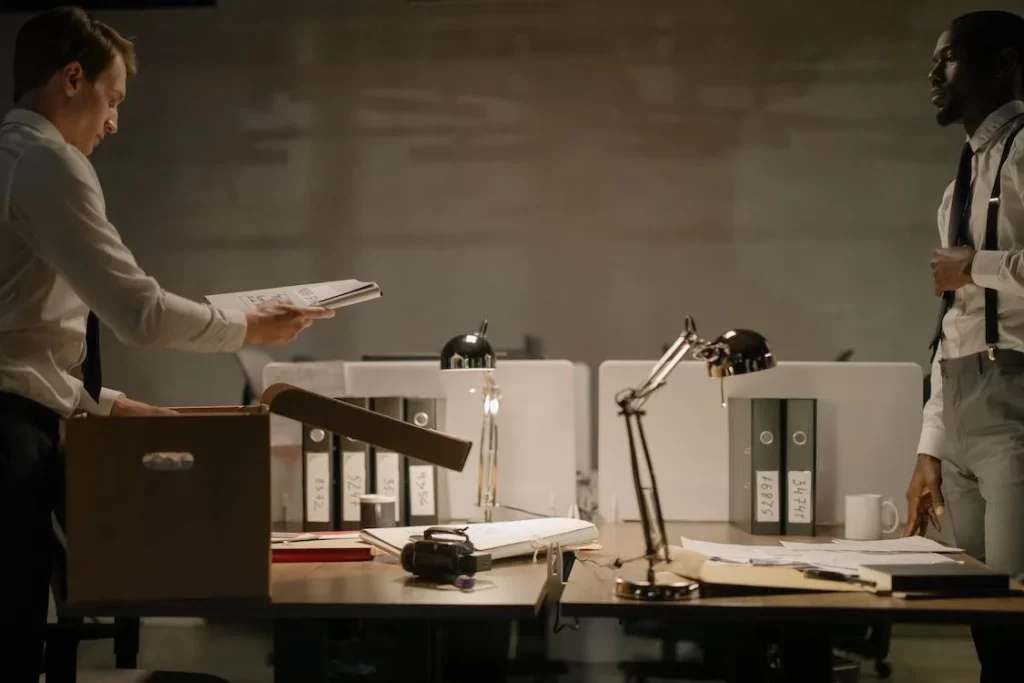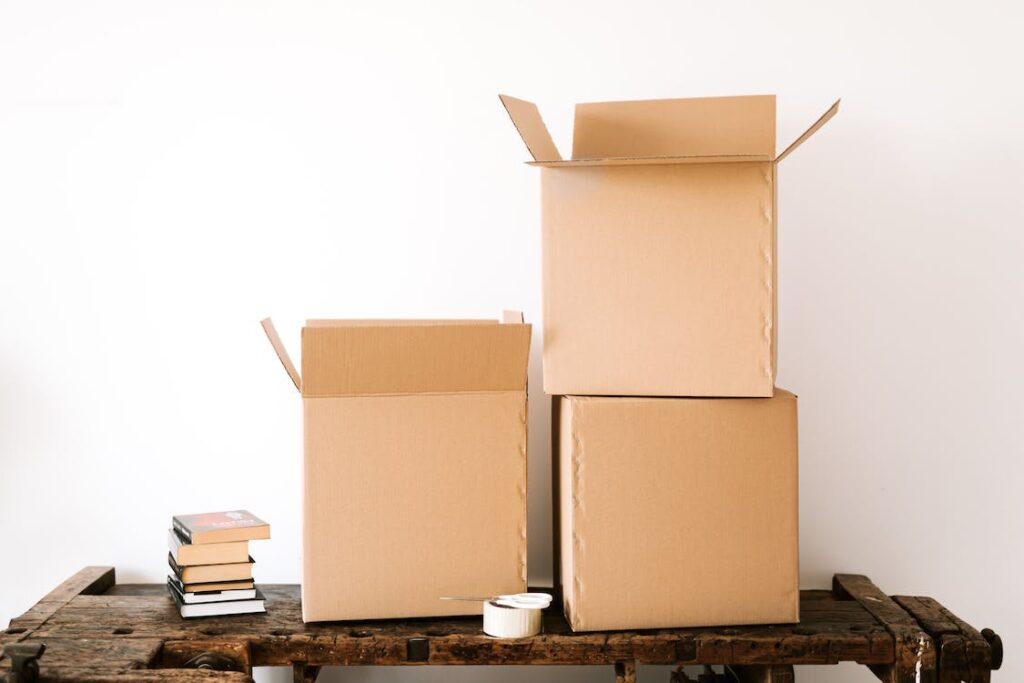Table of Contents
Moving an office is a complex endeavor that requires meticulous planning and organization. Efficient packing is a crucial aspect of the process, as it ensures that items are transported safely and securely to the new location. Whether you’re relocating to a larger office space, downsizing, or simply reorganizing your current workspace, understanding the importance of effective packing is essential for a smooth transition.
Why is efficient packing important for your office move?
Efficient packing serves several critical purposes. Firstly, it helps to minimize the risk of damage to your office equipment, furniture, and supplies during transit. Properly packed items are less likely to shift or break while being moved, reducing the likelihood of costly repairs or replacements. Additionally, organized packing makes the unpacking process much more straightforward once you arrive at your new office location, allowing you to quickly set up and resume normal operations.
In this blog, we will provide you with a comprehensive guide to office packing, covering everything from assessing your packing needs to unpacking and organizing in the new space. You will learn how to create an effective packing plan, organize and declutter your office space before packing, obtain essential packing supplies, and pack different types of items safely and efficiently. We will also discuss the importance of labeling boxes, managing inventory, safeguarding sensitive information, and preparing for transportation and loading.
By following these packing tips, you can ensure that your office move is as smooth and stress-free as possible. Whether you’re moving across town or across the country, proper packing techniques are essential for protecting your valuable assets and ensuring a successful transition to your new office space.

Assessing Your Packing Needs
Before embarking on the packing process for your office move, it’s crucial to conduct a thorough assessment of your packing needs. This assessment involves evaluating the scope and scale of the packing project, as well as identifying any specific items that require special care during the move.
How to Determine the Scope and Scale of Your Packing Project
Assessing the scope and scale of your packing project involves taking stock of all the items that need to be packed, including furniture, equipment, supplies, and documents. Start by conducting a comprehensive inventory of your office space, room by room, noting down each item that will need to be packed. This process will help you get a clear picture of the volume of items that need to be moved and the resources required for the packing process.
Consider the size and layout of your current office space when assessing your packing needs. If you’re downsizing to a smaller office, you may need to prioritize items for packing and storage, while if you’re moving to a larger space, you may have more flexibility in terms of what you can bring with you.
Additionally, think about any special requirements for items that may need extra care during the move. This could include delicate equipment, valuable artwork, sensitive documents, or fragile office supplies. Make a list of these items and note down any specific packing instructions or precautions that need to be taken to ensure their safe transport.
How to Identify Specific Items That Require Special Care
As part of your packing needs assessment, it’s essential to identify any specific items that require special care during the move. These could be items that are particularly fragile, valuable, or sensitive, and may need extra attention and precautions during packing and transportation.
Start by conducting a visual inspection of your office space to identify any items that fit this criteria. Look for delicate equipment, such as computers, printers, or electronic devices, as well as valuable artwork, antiques, or collectibles. Additionally, consider any sensitive documents or confidential materials that need to be handled with care.
Once you’ve identified these items, make a list and develop a plan for packing and transporting them safely to your new office location. This may involve using specialized packing materials, such as bubble wrap or packing peanuts, and taking extra care during the loading and unloading process. By identifying these specific items early on, you can ensure that they receive the attention and protection they require during the move.

Creating a Packing Plan
Developing a comprehensive packing plan is essential for ensuring a smooth and organized office move. This plan serves as a roadmap for the packing process, outlining the steps to be taken, setting a timeline, and assigning responsibilities to team members.
Setting a Timeline for Packing
One of the first steps in creating a packing plan is to establish a timeline for the packing process. Start by determining your move-out date and working backward to allocate sufficient time for packing each area of your office space.
Begin by identifying key milestones, such as when packing will commence, when each area or department will be packed, and when the packing process will be completed. Be sure to factor in any additional time needed for specialized packing, such as for fragile items or sensitive equipment.
Assigning Responsibilities to Team Members
Once you’ve established a timeline for packing, the next step is to assign responsibilities to team members. Create a packing team comprised of employees who will be responsible for packing up their respective work areas or departments.
Assign specific tasks to each team member, such as packing up desks, filing cabinets, or communal areas. Provide clear instructions and guidelines for packing, including how items should be packed, labeled, and organized.
Additionally, designate a packing coordinator or team leader who will oversee the packing process, coordinate communication between team members, and ensure that packing deadlines are met.
Organizing and Decluttering
Before you start packing for your office move, it’s important to organize and declutter your workspace to streamline the packing process and minimize the items you need to move. Follow these steps to efficiently organize and declutter your office:
Streamlining Your Office Space
Begin by assessing your current office space and identifying areas that need to be decluttered and organized. Remove any unnecessary items, such as old furniture, outdated equipment, or unused supplies, that won’t be making the move to your new office.
Identifying Items for Disposal, Donation, or Storage
As you declutter, separate items into categories based on their disposition. Determine which items can be disposed of, recycled, donated to charity, or placed in storage. Dispose of any items that are no longer needed or functional, and consider donating usable items to local charities or organizations in need.
Maximizing Space Efficiency
Optimize your office layout and storage solutions to maximize space efficiency and minimize clutter. Invest in storage solutions such as shelving units, filing cabinets, and storage bins to keep your office organized and clutter-free. Utilize vertical space to create more storage options and keep items off the floor and out of the way.
Implementing a Paperless System
Consider transitioning to a paperless system to reduce paper clutter and streamline document management. Digitize important documents and files, and store them securely in the cloud or on digital storage devices. Encourage employees to minimize printing and utilize digital communication and collaboration tools whenever possible.
Regular Maintenance and Organization
Maintain a clean and organized office space by implementing regular maintenance and organization routines. Schedule regular clean-ups and decluttering sessions to keep your office space tidy and efficient. Encourage employees to clean up after themselves and adopt organized work habits to maintain a clutter-free environment.
By organizing and decluttering your office space before packing, you’ll not only streamline the packing process but also create a more efficient and productive work environment in your new office.

Packing Supplies and Materials
To ensure a smooth and efficient packing process for your office move, it’s essential to have the right packing supplies and materials on hand. Here’s a guide to selecting the necessary packing supplies and where to source them:
Essential Packing Materials and Tools
- Sturdy Boxes: Invest in high-quality cardboard boxes in various sizes to accommodate different items and prevent damage during transit. Choose boxes with reinforced edges for added durability.
- Bubble Wrap and Packing Paper: Protect fragile items such as electronics, glassware, and office equipment with bubble wrap or packing paper. Wrap delicate items individually to prevent breakage.
- Packing Tape: Use strong packing tape to seal boxes securely and prevent them from opening during transportation. Opt for heavy-duty packing tape that adheres well to cardboard surfaces.
- Labels and Markers: Label each box clearly with its contents and destination room to facilitate unpacking and organization at your new office. Use bold markers or labels that are easy to read.
- Packing Peanuts and Foam Inserts: Fill empty spaces in boxes with packing peanuts or foam inserts to cushion items and prevent shifting during transit. This helps protect fragile items from damage.
Where to Source Packing Supplies
- Office Supply Stores: Many office supply stores carry a wide range of packing supplies, including boxes, tape, bubble wrap, and packing paper. Visit your local office supply store to purchase packing materials in bulk.
- Moving Companies: Some moving companies offer packing supplies for sale or rent as part of their moving services. Inquire with your chosen moving company about purchasing packing materials from them.
- Online Retailers: Explore online retailers such as Amazon, U-Haul, or Home Depot for a wide selection of packing supplies available for purchase. Ordering online allows you to conveniently have packing materials delivered to your doorstep.
- Local Hardware Stores: Hardware stores often carry packing supplies alongside their other products. Visit your nearest hardware store to stock up on packing materials, including boxes, tape, and protective padding.
- Recycling Centers: Consider checking with local recycling centers or businesses for free or discounted packing materials. Some recycling centers may offer gently used boxes and packing materials for reuse.
Packing Strategies for Different Items
Packing your office items requires careful consideration of the specific characteristics and requirements of each item. Here are specialized packing techniques for different types of office items to ensure their safe transportation:
How to Pack Electronics
- Back Up Data: Before packing computers, laptops, or other electronic devices, ensure that important data is backed up securely to prevent loss or damage during transit.
- Use Original Packaging: Whenever possible, pack electronic devices in their original packaging, as it provides the best protection with custom-fitted foam inserts and padding.
- Wrap Cables Securely: Bundle and secure cables neatly with twist ties or cable organizers to prevent tangling and damage. Label each cable for easy reassembly.
- Protect Screens: Place a layer of bubble wrap or foam padding over screens to prevent scratches or cracks. Avoid placing heavy objects on top of electronic devices during transportation.
How to Pack Documents
- Organize Documents: Sort and organize documents into categories before packing to streamline the unpacking process. Use file folders or document organizers to keep papers organized.
- Use Secure Containers: Pack documents in sturdy file boxes or document storage containers to protect them from damage during transit. Seal boxes securely with packing tape.
- Label Boxes Clearly: Clearly label each box with the contents and destination room to facilitate easy identification and unpacking. Consider color-coding boxes for different document types or departments.
- Protect Sensitive Documents: For sensitive or confidential documents, consider using lockable file boxes or envelopes for added security. Keep these boxes with you or transport them separately from other items.
How to Pack Furniture
- Disassemble Large Pieces: Whenever possible, disassemble large furniture pieces such as desks, chairs, and bookcases to make them easier to transport and pack.
- Wrap Furniture Legs: Protect furniture legs from scratches and damage by wrapping them in bubble wrap or furniture blankets. Secure the wrapping with packing tape.
- Use Furniture Pads: Place furniture pads or moving blankets over larger pieces to cushion them during transportation and prevent dents or scratches.
- Label Furniture Parts: Label each disassembled part of furniture with its corresponding piece or assembly instructions to simplify reassembly at your new office.
How to Pack Fragile Items
- Wrap Items Individually: Wrap fragile items such as glassware, ceramics, and artwork individually in bubble wrap or packing paper to provide cushioning and prevent breakage.
- Use Cushioning Materials: Fill empty spaces in boxes with packing peanuts, foam inserts, or crumpled packing paper to provide additional cushioning and prevent items from shifting during transit.
- Pack Fragile Items Together: Pack fragile items together in smaller boxes to minimize movement and reduce the risk of breakage. Label these boxes as “fragile” and handle them with care during transportation.
- Stack Boxes Carefully: When stacking boxes containing fragile items, place heavier and sturdier boxes at the bottom and lighter, fragile boxes on top to prevent crushing or damage.

Labeling and Inventory Management
Proper labeling and inventory management are essential aspects of a successful office move. Here’s how to ensure your items are labeled accurately and tracked effectively:
How to Label Boxes Clearly
- Use Bold Markers: Clearly label each box with a bold marker, including information such as the contents, destination room, and handling instructions (e.g., “fragile” or “this side up”).
- Color-Code Boxes: Consider using color-coded labels or markers to categorize boxes by department, floor, or priority level. This visual system can help movers quickly identify where each box belongs.
- Create a Labeling System: Develop a consistent labeling system, such as numbering each box and maintaining a corresponding inventory list. This system will streamline the unpacking process and minimize confusion.
- Place Labels on Multiple Sides: Place labels on multiple sides of each box to ensure they are visible from different angles, especially when boxes are stacked or stored in tight spaces.
How to Create an Inventory List
- Document Box Contents: As you pack, create an inventory list detailing the contents of each box. Include a brief description of items and note any special handling instructions or fragile items.
- Number Boxes: Assign a unique number to each box and record this number on both the box and the corresponding entry in your inventory list. This numbering system will help you track boxes during transportation and unpacking.
- Use Spreadsheet Software: Consider using spreadsheet software or inventory management apps to create and maintain your inventory list digitally. This allows for easy updates and sharing with team members.
- Include Box Locations: Note the location or destination room of each box on your inventory list. This information will help movers place boxes in the correct areas of your new office space during unpacking.
How to Secure Sensitive Information
- Identify Sensitive Documents: Identify documents containing sensitive or confidential information, such as financial records, client data, or employee files.
- Secure Document Storage: Store sensitive documents in lockable file cabinets or secure storage containers to prevent unauthorized access during the move.
- Transport Separately: Consider transporting sensitive documents separately from other office items, either in a locked briefcase or with a designated team member responsible for their security.
- Shred Unnecessary Documents: Dispose of any outdated or unnecessary documents by shredding them securely. This ensures that sensitive information remains confidential and protected.
Transportation and Loading
Efficient transportation and loading procedures are crucial for a smooth office move. Here’s how to prepare for the transportation of packed items and ensure safe loading and unloading:
How to Prepare for Transportation
- Plan Logistics in Advance: Coordinate with your moving company or logistics team to plan transportation logistics well in advance. Confirm the moving date, time, and any special requirements for loading and unloading.
- Arrange for Moving Equipment: Ensure that the necessary moving equipment, such as dollies, ramps, and moving straps, is available and in good condition for loading and unloading heavy items.
- Secure Transportation Vehicles: If using rented trucks or vans for transportation, inspect the vehicles beforehand to ensure they are clean, well-maintained, and equipped with the necessary safety features.
- Protect Fragile Items: Take extra precautions to protect fragile items during transportation by securely wrapping them in bubble wrap, padding, or moving blankets. Use sturdy boxes and packing materials to prevent damage.
How to Ensure Safe Loading and Unloading
- Follow Safety Guidelines: Prioritize safety during the loading and unloading process by adhering to proper lifting techniques, wearing protective gear, and using caution when handling heavy or bulky items.
- Assign Responsibilities: Assign specific roles and responsibilities to team members during the loading and unloading process. Designate a team leader to oversee operations and ensure tasks are carried out efficiently.
- Organize Loading Sequence: Plan the loading sequence strategically to optimize space utilization and minimize shifting of items during transportation. Load heavier items first and distribute weight evenly throughout the vehicle.
- Secure Items in Transit: Use straps, tie-downs, or bungee cords to secure items in the transportation vehicle and prevent them from shifting or sliding during transit. Double-check that all items are properly secured before departure.
How to Coordinate Unloading at the Destination
- Communicate with Movers: Provide clear instructions to movers or team members at the destination regarding where each item should be unloaded and placed in the new office space.
- Supervise Unloading Process: Supervise the unloading process to ensure that items are handled with care and placed in the designated areas of the new office according to your floor plan or layout.
- Check for Damage: Conduct a thorough inspection of items as they are unloaded to identify any damage or discrepancies. Document any issues and communicate them to the moving company or relevant parties.
- Dispose of Packing Materials: Dispose of packing materials and debris responsibly after unloading is complete. Recycle or discard cardboard boxes, packing peanuts, and other materials in accordance with local waste disposal regulations.
How to Decide Office Moving Service
Based on your needs, you might be looking for a specific service from your chosen office moving company. Here is a breakdown of each level of service provided by our office movers:

Unpacking and Organizing in the New Space
After the transportation and loading process, it’s time to focus on unpacking and organizing your office items in the new space. Here’s how to approach this critical phase of the move:
How to Prioritize Unpacking
- Identify Essential Items: Start by unpacking essential items that are necessary for immediate functionality in the new office space. This may include computers, office supplies, and essential documents needed for daily operations.
- Refer to Floor Plan: Consult the floor plan or layout of the new office space to determine where each department or team will be located. Unpack items according to their designated areas to facilitate organization and workflow.
- Unpack in Phases: Break down the unpacking process into manageable phases or sections to prevent overwhelm. Prioritize unpacking common areas, shared spaces, and high-traffic areas before moving on to individual workstations or offices.
- Delegate Unpacking Tasks: Assign unpacking tasks to designated team members or departments to streamline the process and ensure that everyone is accountable for their assigned areas.
How to Efficiently Unpack
- Systematic Approach: Adopt a systematic approach to unpacking by starting with one area or category of items at a time. Focus on completing one section before moving on to the next to maintain organization and clarity.
- Label Recognition: Refer to the labels on boxes and containers to identify the contents and destination rooms. Unpack items systematically based on their labels, ensuring that each item is placed in its designated location.
- Dispose of Packing Materials: As you unpack items, set aside packing materials such as cardboard boxes, bubble wrap, and packing peanuts for recycling or disposal. Keep a designated area for packing materials to maintain a clutter-free workspace.
- Set Up Workstations: Once essential items are unpacked and organized, focus on setting up workstations and office furniture according to the floor plan. Ensure that desks, chairs, and equipment are arranged ergonomically for optimal comfort and productivity.
How to Facilitate Team Collaboration
- Team Involvement: Involve team members in the unpacking and organizing process to foster collaboration and teamwork. Encourage open communication and feedback to address any concerns or preferences regarding workspace setup.
- Department Coordination: Coordinate with department heads or team leaders to ensure that each department’s specific needs and preferences are addressed during the unpacking and setup process.
- Customize Workspaces: Allow team members to personalize their workspaces within the overall framework of the office layout. Empower individuals to arrange their desks, shelves, and personal items in a way that suits their workflow and preferences.
- Celebrate Progress: Acknowledge and celebrate milestones as teams progress through the unpacking and organizing process. Recognize achievements and contributions to boost morale and maintain motivation throughout the transition.

Conclusion
By following the steps outlined in this guide, you can ensure a smooth transition and minimize disruptions to productivity and morale. From assessing your packing needs to supporting employees in settling into the new space, each phase of the process plays a crucial role in the overall success of the office relocation. Remember to prioritize open communication, listen to employee feedback, and remain flexible and adaptable throughout the transition. By working together as a cohesive team, you can navigate the challenges of an office move and emerge stronger and more resilient than ever before.
Are you planning an office move in the near future? Don’t tackle it alone! Our team at 680 Movers is here to support you every step of the way. From packing and logistics to unpacking and post-move adjustments, we’ve got you covered. Contact us today to learn more about our comprehensive office moving services and take the stress out of your next relocation.
With the right strategies and support in place, your office move can be a seamless and successful experience for everyone involved. Get started today and make your next move a positive and productive one!